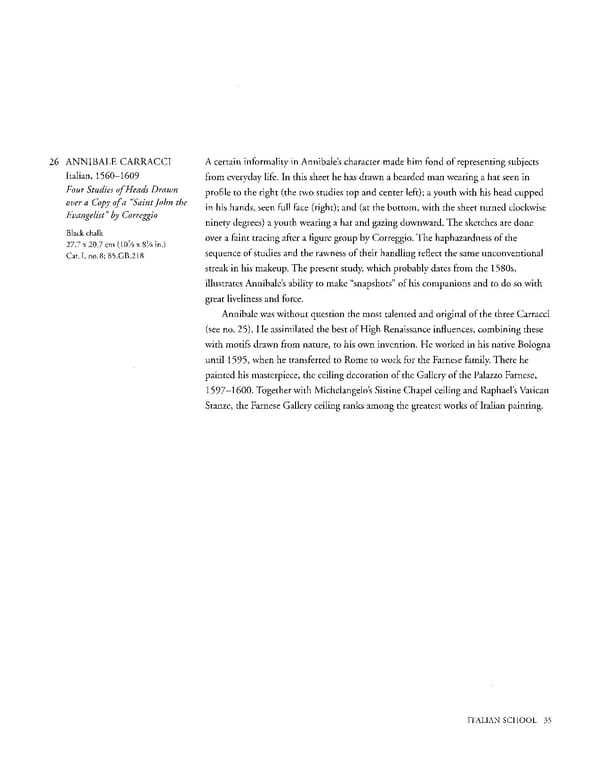26 ANNIBALE CARRACCI A certain informality in Annibale's character made him fond of representing subjects Italian, 15601609 from everyday life. In this sheet he has drawn a bearded man wearing a hat seen in Four Studies of Heads Drawn profile to the right (the two studies top and center left); a youth with his head cupped over a Copy of a "Saint John the in his hands, seen full face (right); and (at the bottom, with the sheet turned clockwise Evangelist" by Correggio ninety degrees) a youth wearing a hat and gazing downward. The sketches are done Black chalk over a faint tracing after a figure group by Correggio. The haphazardness of the 27.7 x 20.7 cm (10 x 8 in.) Cat. I, no. 8; 85.GB.218 sequence of studies and the rawness of their handling reflect the same unconventional streak in his makeup. The present study, which probably dates from the 1580s, illustrates Annibale's ability to make "snapshots" of his companions and to do so with great liveliness and force. Annibale was without question the most talented and original of the three Carracci (see no. 25). He assimilated the best of High Renaissance influences, combining these with motifs drawn from nature, to his own invention. He worked in his native Bologna until 1595, when he transferred to Rome to work for the Farnese family. There he painted his masterpiece, the ceiling decoration of the Gallery of the Palazzo Farnese, 1597—1600. Together with Michelangelo's Sistine Chapel ceiling and Raphael's Vatican Stanze, the Farnese Gallery ceiling ranks among the greatest works of Italian painting. ITALIAN SCHOOL 35
 Masterpieces of the Getty Museum: Drawings Page 35 Page 37
Masterpieces of the Getty Museum: Drawings Page 35 Page 37